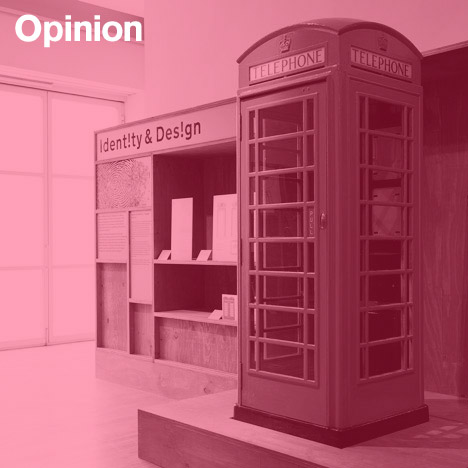
"Why wouldn't a contemporary museum use eBay?"
Opinion: in this week's column, Dezeen editor-in-chief Marcus Fairs wonders why London's Design Museum is so reluctant to talk about money, arguing that design classics "aren't theoretical exercises but sophisticated appeals to the wallet."
I've spent much of last week ignoring phone calls and emails from news reporters. Architecture weekly Building Design and London daily the Evening Standard were both desperate to confirm that the Design Museum in London used eBay to source items for its permanent collection; the museum refused to comment so all that was standing between the tabloids and a sensational scoop was my indiscretion.
This inconsequential media frenzy started when I blithely mentioned on Twitter that the museum was scouring the online auction site for design classics for its newly assembled collection, which went on permanent display for the first time this week in an exhibition titled Extraordinary Stories about Ordinary Things.
This seemed logical: why wouldn't a contemporary museum use a popular and reliable bartering platform instead of (or as well as) more traditional procurement avenues such as auction houses, galleries and bequests?
If it was odd that reporters thought this was newsworthy, it was equally strange that the Design Museum wouldn't admit it was true. The museum's exhibition title declares that the items in question are "ordinary things" - and the internet is the obvious place to buy such goods.
If you or I wanted to buy nappies or a Kindle - both of which are included in the collection's 3000-strong inventory - there's a very good chance we'd turn to Amazon. Yet the Design Museum's press release obliquely references objects that have been "added to" the collection, rather than "ordered online".
Even items such as the Tulip chair, the Valentine typewriter and the red K2 telephone box, while not being household items for most of us, are today available on eBay for £180, £399 and £5,800 respectively. They're not rare and precious artworks; they're mass-produced consumables being openly traded in a secondary market.
In short, normal people go shopping, but design institutions seem obliged to avoid such crude inferences of lowly commerce. They must instead "collect" and "acquire".
The texts accompanying the Design Museum's exhibits avoid any suggestion of money changing hands, not only in their acquisition but in their development and everyday use. The "extraordinary stories" include explaining how design can "create a sense of identity" and "communicate clearly" but never "sell more products".
The story of the development of the London 2012 logo tells how "for the first time in the history of the Games, the Olympics and Paralympics embraced the same logo," according to the exhibition press release. "The logo was created to be a ‘design for everybody’ – the exhibition will reveal the design process and thinking behind this symbol of Britain as a world stage and allow audiences to interact with it." Not a word about how the logo was a vital money-spinner for the games, crucial to securing sponsorship deals and shifting merchandise.
Even the purpose of money itself is disguised by selective rhetoric: the pound coin is "a strong symbol of Britain" rather than a quotidian trading token while the design for the new Euro notes had to "work on many levels" including making EU nations feel properly represented, making fakery difficult and being "easily distinguishable for the visually impaired". Hang on, what about being convenient for shopping?
It seems curious to cast design as an altruistic social service and ignore its parallel commercial purpose: most of the items in the collection were created to be sold. The form and function of a Tizio lamp or a Myto chair aren't theoretical exercises but sophisticated appeals to the wallet.
Of course many famous design classics have been comprehensive failures in a business sense, which makes for even better "extraordinary stories", but ones that are similarly too rarely told. This tendency to airbrush out design's commercial narrative is not confined to the Design Museum; it's a strangely common position among the institutional elite. Business is considered dirty while creativity is seen as untainted.
But one of the reasons I'm interested in design is that it perfectly straddles both culture and commerce. They keep each other grounded. To ignore one in favour of the other is to tell stories that are not extraordinary, but curiously incomplete.
Extraordinary Stories about Ordinary Things is at the Design Museum in London until 4 January 2015.
More opinion on Dezeen: read an introduction to Dezeen Opinion in which Marcus Fairs explains why it's taken so long for us to take a stance and Sam Jacob's first opinion column about how sites like Dezeen are affecting design culture.